12 Fantasy Films From Warner Bros. That Spark Imagination
Warner Bros. has a rich history of producing fantasy films that captivate audiences with imaginative storytelling and immersive worlds. From magical creatures and enchanted lands to unforgettable characters and breathtaking visuals, these films transport viewers into realms of wonder and adventure. Whether it’s exploring a hidden garden or battling mythical beasts, Warner Bros. has brought countless fantastical stories to life, sparking the imagination of viewers of all ages.
This post may contain affiliate links, which helps keep this content free. Please read our disclosure for more info.
Harry Potter and the Sorcerer’s Stone (2001)
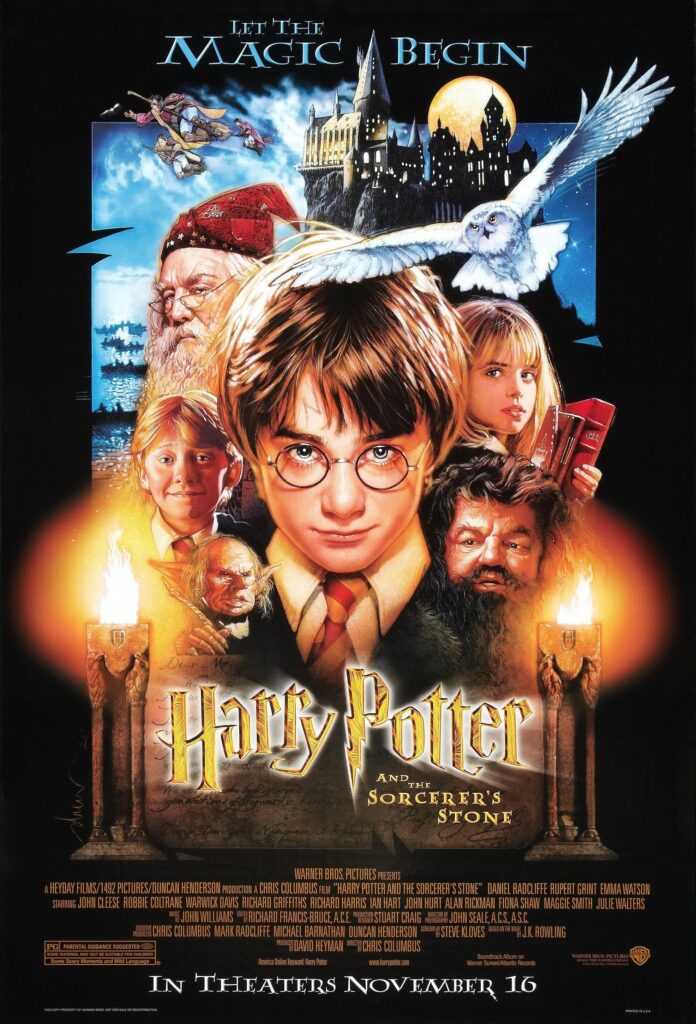
Warner Bros. introduced audiences to the magical world of Harry Potter and the Sorcerer’s Stone, based on J.K. Rowling’s beloved book series. The film marked the beginning of a global phenomenon that transported viewers to a richly detailed magical world, complete with wands, spells, and fantastical creatures. The story follows young Harry Potter as he discovers his identity as a wizard and embarks on his journey to Hogwarts School of Witchcraft and Wizardry. What sets this film apart is its skillful blending of whimsical magic with the very real challenges of growing up, creating a compelling narrative that resonates with both young and adult audiences alike.
The film’s enchanting sets, from the iconic Hogwarts castle to Diagon Alley, created a tangible sense of wonder. The exceptional visual effects brought magical creatures and spells to life, sparking imaginations worldwide. With its captivating performances by a talented cast, including Daniel Radcliffe, Emma Watson, and Rupert Grint, Harry Potter and the Sorcerer’s Stone not only established a new era of fantasy filmmaking but also set the bar for how to create immersive, imaginative worlds on screen. Warner Bros.’ commitment to bringing this fantastical universe to life resonated deeply with fans, and the film’s success led to one of the most beloved and expansive film franchises in history.
The Matrix (1999)

The Matrix, produced by Warner Bros., is a visionary blend of science fiction and fantasy that sparked new ideas about reality and perception. Directed by the Wachowskis, the film introduces audiences to a dystopian world where humans unknowingly live in a simulated reality controlled by machines. The story follows Neo, a hacker who is awakened to the truth about the Matrix and his role in bringing down the machine empire. While rooted in the realm of sci-fi, the film’s exploration of philosophical themes about free will, reality, and human consciousness taps into the fantastical by questioning what is real and how we understand our world.
The film’s groundbreaking visual effects, most notably the iconic bullet-dodging scenes, brought a sense of surreal fantasy to the narrative, blurring the lines between action, science fiction, and fantasy. Warner Bros. was instrumental in distributing a film that redefined the genre, pushing the boundaries of both technology and storytelling. The Matrix became a cultural touchstone, influencing not only cinema but also fashion, music, and popular culture. Its imaginative world-building, combined with its high-concept philosophical questions, has continued to spark discussions and interpretations, making it a lasting influence on the fantasy genre.
The Lord of the Rings: The Fellowship of the Ring (2001)
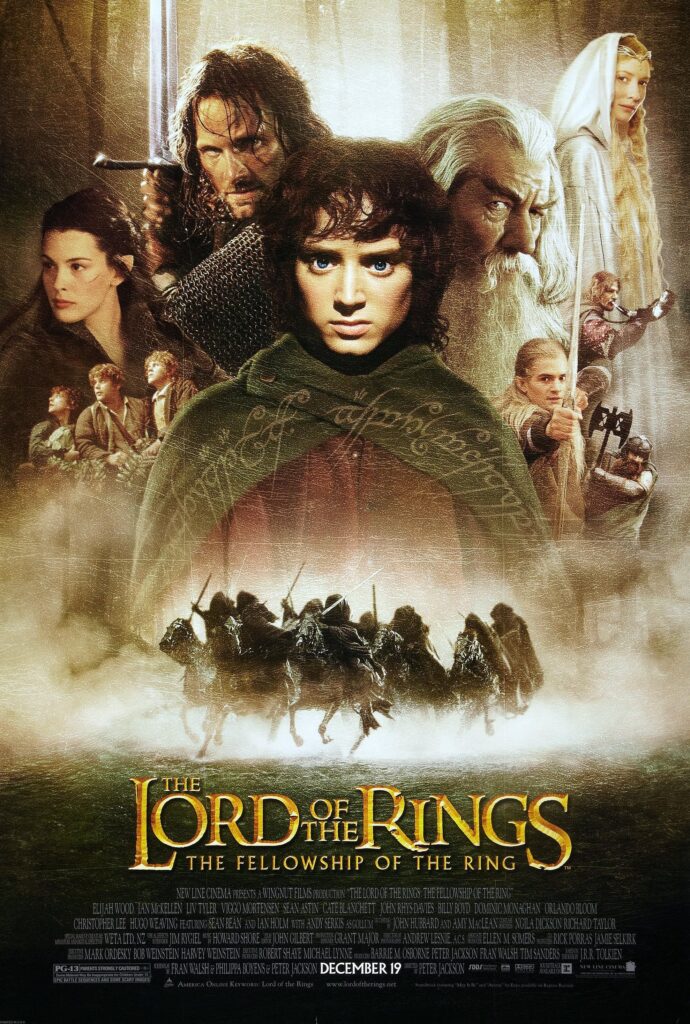
Though distributed by New Line Cinema, The Lord of the Rings: The Fellowship of the Ring was produced by Warner Bros., and it stands as one of the most influential fantasy films of all time. Directed by Peter Jackson, the film adapted J.R.R. Tolkien’s classic novel into a sweeping, epic journey that transported viewers to the fictional world of Middle-earth. With breathtaking landscapes, from the tranquil Shire to the haunting Mordor, the film created a world that felt both vast and intimate, filled with rich history and lore. At the heart of the story is the Fellowship, comprised of characters like Frodo Baggins, Aragorn, and Gandalf, who must journey together to destroy the One Ring, a powerful artifact that could enslave the world.
Warner Bros. was instrumental in ensuring that Tolkien’s world would be faithfully brought to life, with the studio providing the resources for incredible special effects and CGI to bring Middle-earth to vivid reality. The film’s immersive set designs, combined with groundbreaking visual effects, made the impossible possible on screen, allowing fans to see elves, dwarves, and orcs come to life in ways never seen before. The Fellowship of the Ring not only redefined epic fantasy films but also laid the foundation for a trilogy that would become synonymous with imaginative world-building and storytelling. The film’s lasting impact on fantasy cinema, along with its massive commercial and critical success, has made it a benchmark for fantasy filmmaking.
Charlie and the Chocolate Factory (2005)

Tim Burton’s Charlie and the Chocolate Factory, produced by Warner Bros., reimagines the classic Roald Dahl story through the lens of Burton’s darkly whimsical style. The film follows Charlie Bucket, a poor boy who wins a golden ticket to tour the extraordinary and bizarre chocolate factory of Willy Wonka, played by Johnny Depp. The fantastical elements of the factory, with its roomfuls of candy rivers, edible gardens, and mischievous Oompa-Loompas, create a world that feels both dreamlike and strangely unsettling, perfectly fitting Burton’s unique visual aesthetic.
What makes this film particularly magical is its ability to blend a child’s wonder with the darker themes of greed, envy, and consequences. The fantastical world is richly detailed, with every candy-filled room bringing something new and unexpected to the screen. Warner Bros. gave Burton the creative freedom to design an imaginative world that felt like it came from the pages of Dahl’s book, while adding an extra layer of surrealism and eccentricity that only Burton could bring. The film sparked the imaginations of audiences young and old, with its vibrant sets, quirky characters, and delightful yet unsettling atmosphere.
Fantastic Beasts and Where to Find Them (2016)
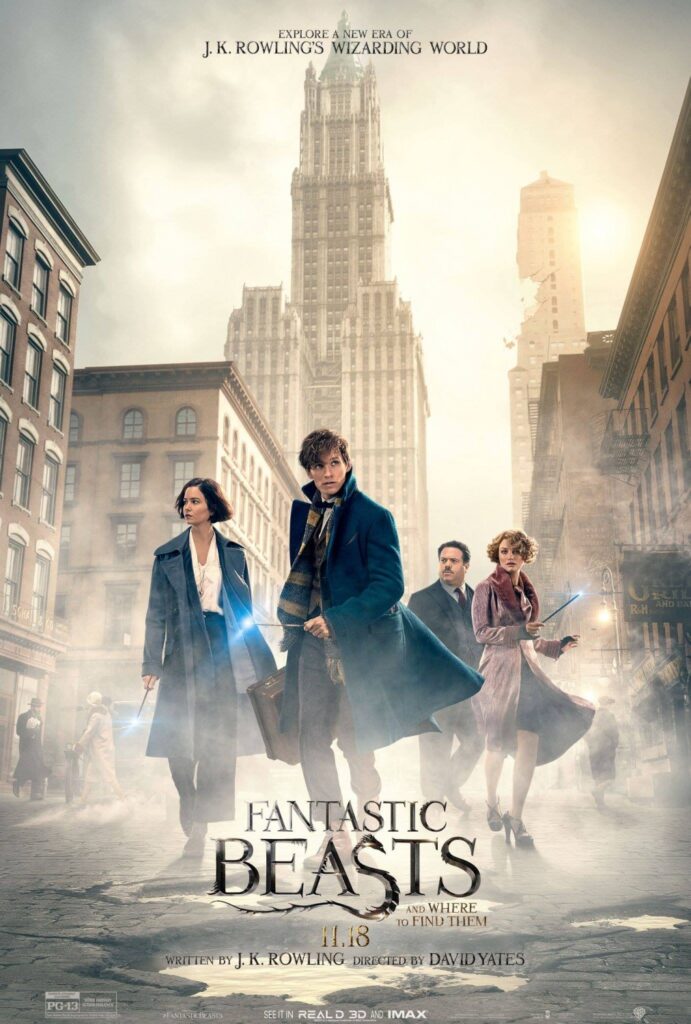
Set in the same magical universe as Harry Potter, Warner Bros. brought Fantastic Beasts and Where to Find Them to the screen, marking a return to J.K. Rowling’s wizarding world, but this time, the story takes place in 1920s New York. The film follows magizoologist Newt Scamander as he navigates a world of magical creatures and dark forces. Fantastic Beasts opens up a whole new realm of imagination, expanding the magical world with new creatures, spells, and wizarding lore that were not explored in the original series.
Warner Bros. played a pivotal role in bringing this prequel to life, ensuring that the world-building was just as rich and immersive as the original series. The film’s visual effects showcased some of the most impressive creatures ever seen in fantasy cinema, from the mischievous Niffler to the towering Thunderbird. The world-building in Fantastic Beasts is filled with magic and wonder, inviting audiences into a universe that is both familiar and freshly expanded. By introducing new characters, magical creatures, and elements of wizarding history, Warner Bros. helped create a new series that sparked curiosity and excitement for the future of the wizarding world.
The Wizard of Oz (1939)
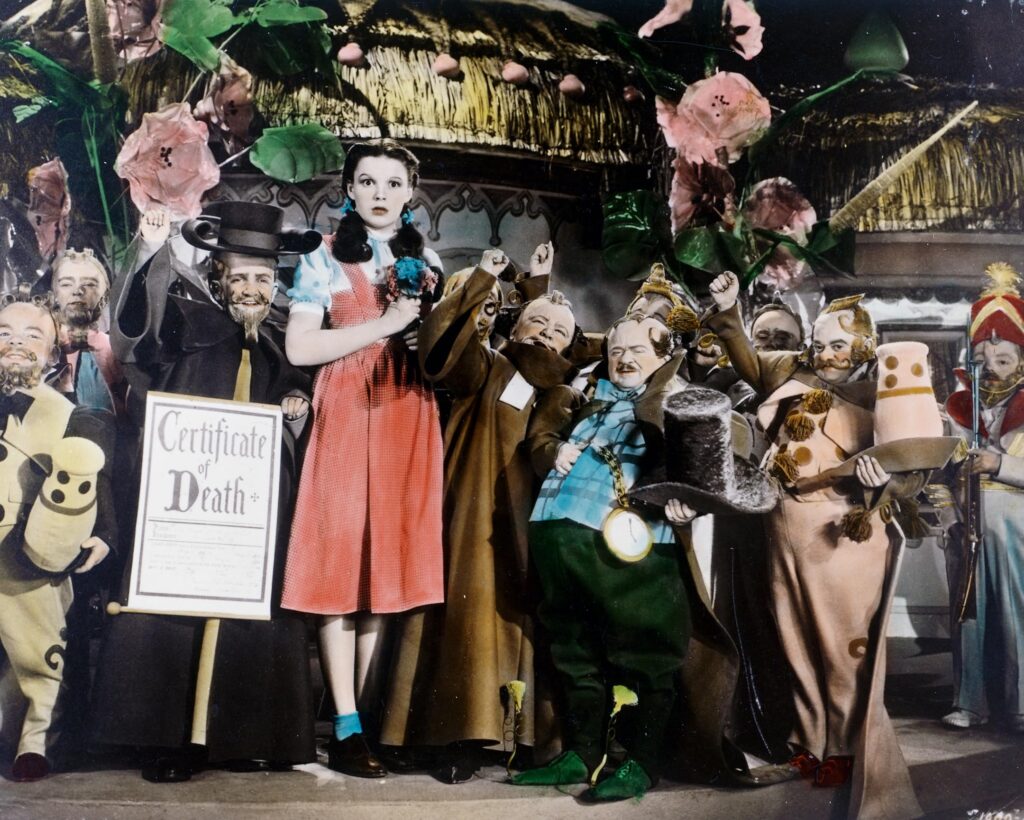
One of the most iconic fantasy films ever made, The Wizard of Oz, produced by Warner Bros., takes audiences on a fantastical journey to the magical land of Oz. The story of Dorothy’s quest to return home after being swept away by a tornado is as timeless as it is imaginative. With its colorful characters like the Cowardly Lion, the Tin Man, and the Scarecrow, the film weaves a world where dreams, both literal and figurative, come to life.
The film’s use of Technicolor, especially during Dorothy’s entrance into the land of Oz, made the fantasy world visually striking, unlike anything audiences had seen before. Warner Bros. was responsible for distributing this groundbreaking film, which continues to inspire and spark imagination through its fantastical storytelling and memorable songs. The Wizard of Oz remains a staple of fantasy filmmaking, forever etched in cinematic history for its whimsical approach to magic, friendship, and self-discovery.
Jumanji (1995)

Jumanji, produced by Warner Bros., brings the fantastical concept of a magical board game to life, with unpredictable adventures waiting inside its world. The story centers on two children who, after discovering an ancient game, begin playing and inadvertently bring its wild jungle creatures and challenges into the real world. What makes Jumanji so captivating is the way it blends real-world consequences with elements of magic, from giant spiders to stampedes of wild animals.
The imaginative world created within the game feels both exhilarating and dangerous, with unpredictable outcomes that keep viewers on the edge of their seats. Warner Bros. played a major role in bringing this thrilling and fantastical world to life, using groundbreaking special effects for its time. The film’s sense of adventure and whimsical chaos continues to spark the imaginations of audiences, particularly with its fantastic concept of a game that holds far more than just pieces and dice.
The Iron Giant (1999)

The Iron Giant, produced by Warner Bros., stands as one of the most beloved animated fantasy films. Directed by Brad Bird, the film tells the story of a young boy named Hogarth Hughes who befriends a giant robot from outer space. Set in the 1950s during the Cold War, the film blends heartfelt emotion with fantasy, focusing on themes of friendship, identity, and self-sacrifice. The giant robot’s ability to transform into various forms and its eventual sacrifice create a powerful narrative about the importance of choice and destiny.
The world-building in The Iron Giant is subtle yet rich, with the quiet, small-town setting contrasting against the towering presence of the Giant. Warner Bros. helped bring this imaginative story to life with beautifully detailed animation, blending futuristic technology with the warmth of human connection. The film’s underdog status, initially underappreciated in theaters, has only grown in stature over time, sparking the imagination of generations through its simple but powerful fantasy elements.
Space Jam (1996)

Space Jam, produced by Warner Bros., merges the world of animation and live action in a way that had never been seen before. The film stars basketball legend Michael Jordan alongside iconic animated characters like Bugs Bunny and Daffy Duck. The story revolves around the Looney Tunes characters teaming up with Jordan to win a basketball game against a group of evil aliens. The blending of cartoon antics with real-life sports creates a uniquely fantastical world that feels both whimsical and athletic.
The film’s imaginative concept, where cartoon characters exist in the real world and interact with famous athletes, was groundbreaking for its time. Warner Bros. played a major role in creating this playful, family-friendly adventure that successfully brought together the worlds of animation, sports, and comedy. The fantasy elements, giant basketball games, the ability to shrink opponents, and the magical basketball abilities sparked the imagination of children and adults alike, and Space Jam remains a beloved classic in pop culture.
The Hobbit: An Unexpected Journey (2012)

Based on J.R.R. Tolkien’s novel, The Hobbit: An Unexpected Journey was produced by Warner Bros. as part of Peter Jackson’s epic adaptation of Middle-earth. The film takes viewers on a journey with Bilbo Baggins, a hobbit who is swept into an adventure to reclaim the Lonely Mountain from the dragon Smaug. Warner Bros. worked with Jackson to create a world that is visually stunning, filled with magnificent landscapes, intricate costumes, and fantastical creatures.
The film expands upon the universe created in The Lord of the Rings trilogy, introducing new characters and creatures, including the shape-shifting Beorn and the trolls that Bilbo and his companions encounter. The immersive world-building, combined with the sweeping score and CGI effects, brings the fantasy world to life in a way that invites viewers into a space that feels both ancient and timeless. Warner Bros. played an essential role in bringing this film to life, ensuring that Jackson’s vision of Middle-earth, both familiar and new, was effectively realized on screen. The film’s success sparked interest in Tolkien’s works, continuing the legacy of the immersive worlds Jackson had established years earlier.
The Polar Express (2004)
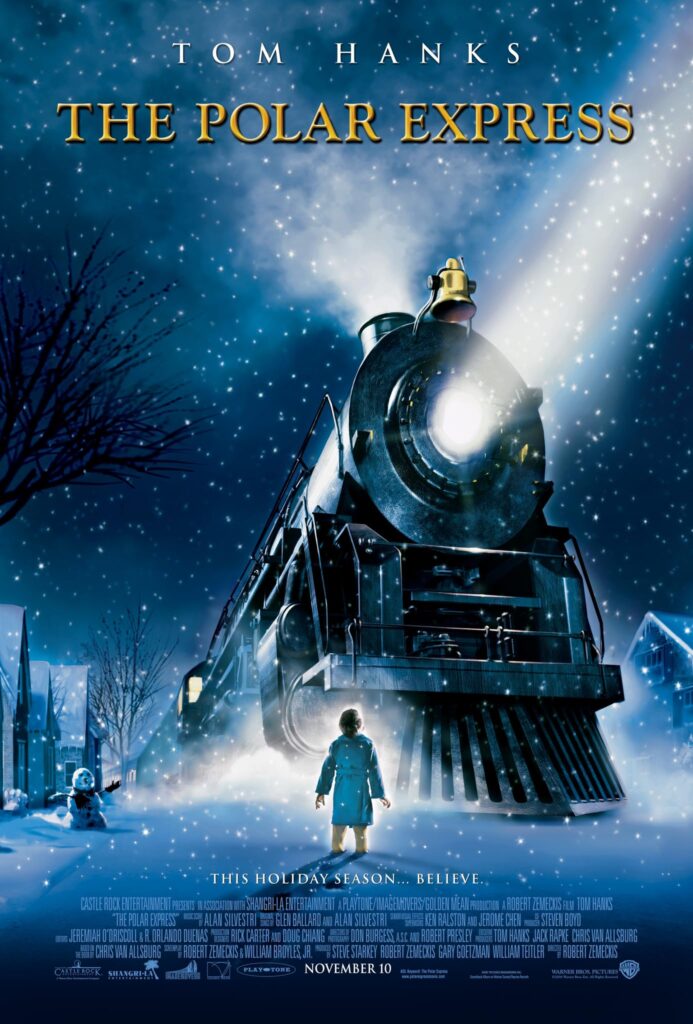
The Polar Express, produced by Warner Bros., brings to life the beloved children’s book by Chris Van Allsburg. Directed by Robert Zemeckis, this film follows a young boy who embarks on a magical train ride to the North Pole, where he learns the true meaning of Christmas. The film’s innovative use of motion-capture technology created a fantastical world that blends the spirit of the holiday season with stunning visual effects and an enchanting narrative.
What makes The Polar Express so unique is its ability to transport viewers into a world that feels both dreamlike and tangible. The journey to the North Pole, filled with wonder, joy, and a sense of childlike innocence, captures the imagination of audiences. Warner Bros. helped bring this magical journey to life, creating a visually stunning experience that feels like stepping into a Christmas dream. The film has since become a holiday classic, sparking the imaginations of children and adults alike every holiday season.
The LEGO Movie (2014)

Warner Bros. played a key role in the production of The LEGO Movie, a delightful and imaginative animated film set in a world built entirely out of LEGO bricks. The film follows Emmet, an ordinary construction worker who is mistakenly identified as the “Special” who can save the LEGO universe from an evil tyrant. The film’s charm lies in its ability to merge creative world-building with a fast-paced narrative that explores themes of creativity, individuality, and the power of imagination.
The fantastical world of LEGO, with its vibrant, dynamic environments and imaginative characters, sparks creativity in the viewer. What sets The LEGO Movie apart is its ability to engage both children and adults, with a mix of humor, action, and heartfelt moments. The use of LEGO bricks to create intricate worlds and vehicles provides a unique visual experience, and Warner Bros. helped deliver a film that is as visually inventive as it is narratively fun. The success of the film has since led to sequels and spin-offs, all maintaining the imaginative spirit that made the original so special.
This article originally appeared on Avocadu.
